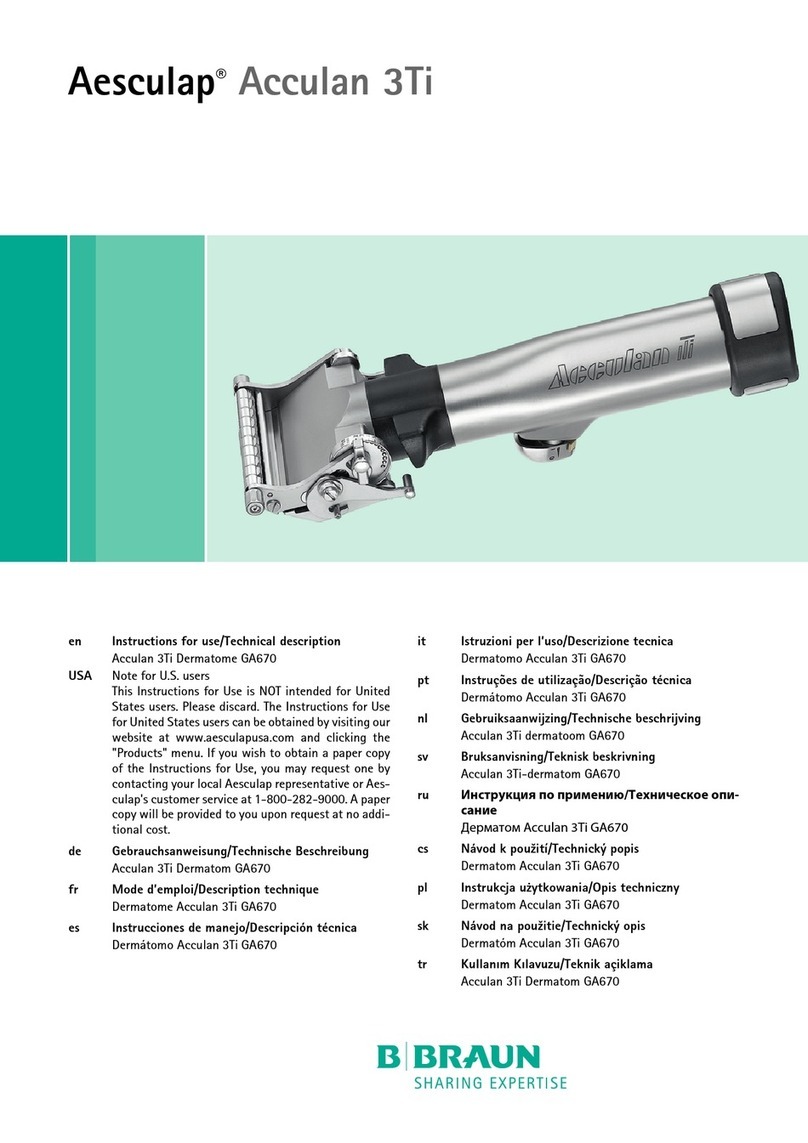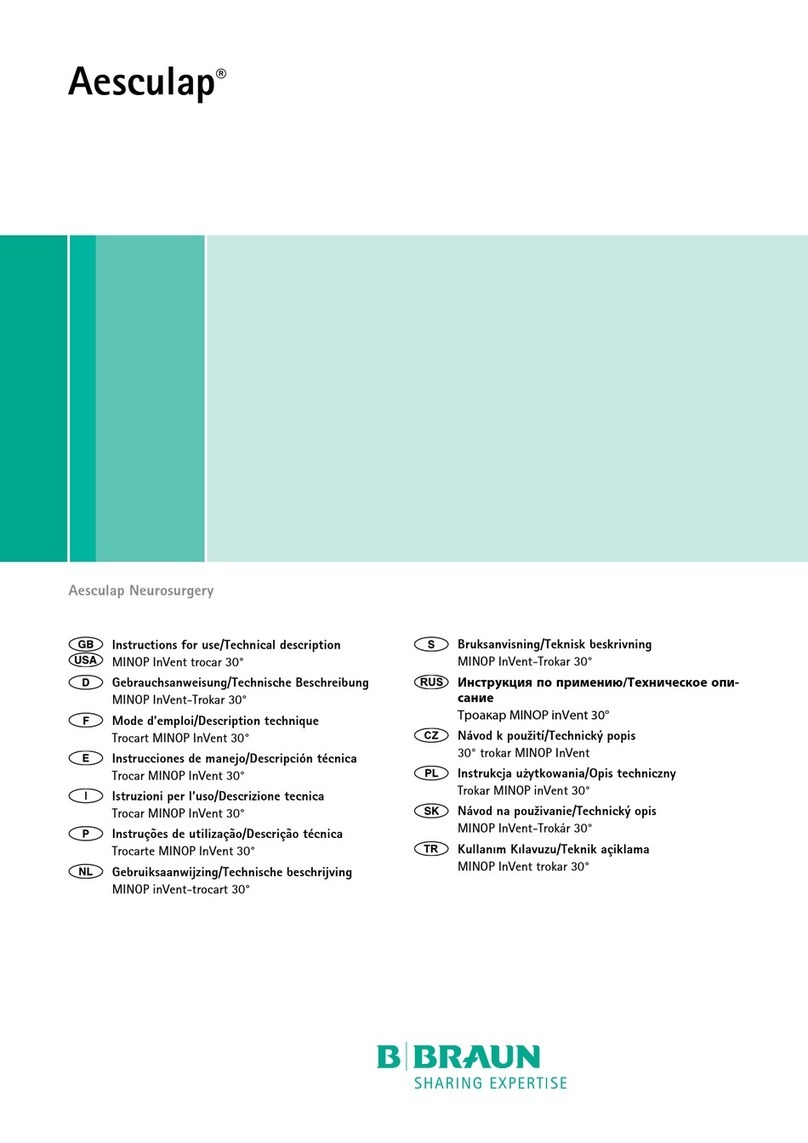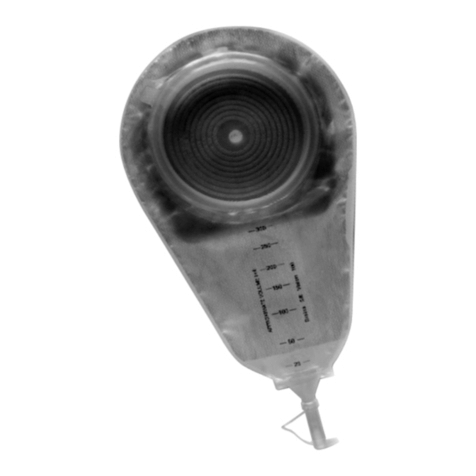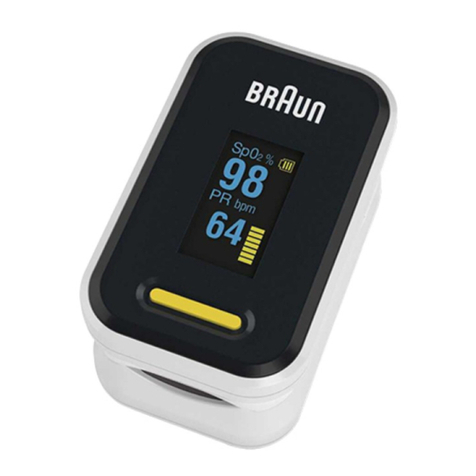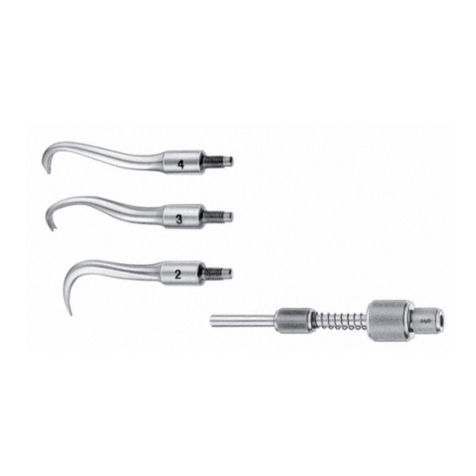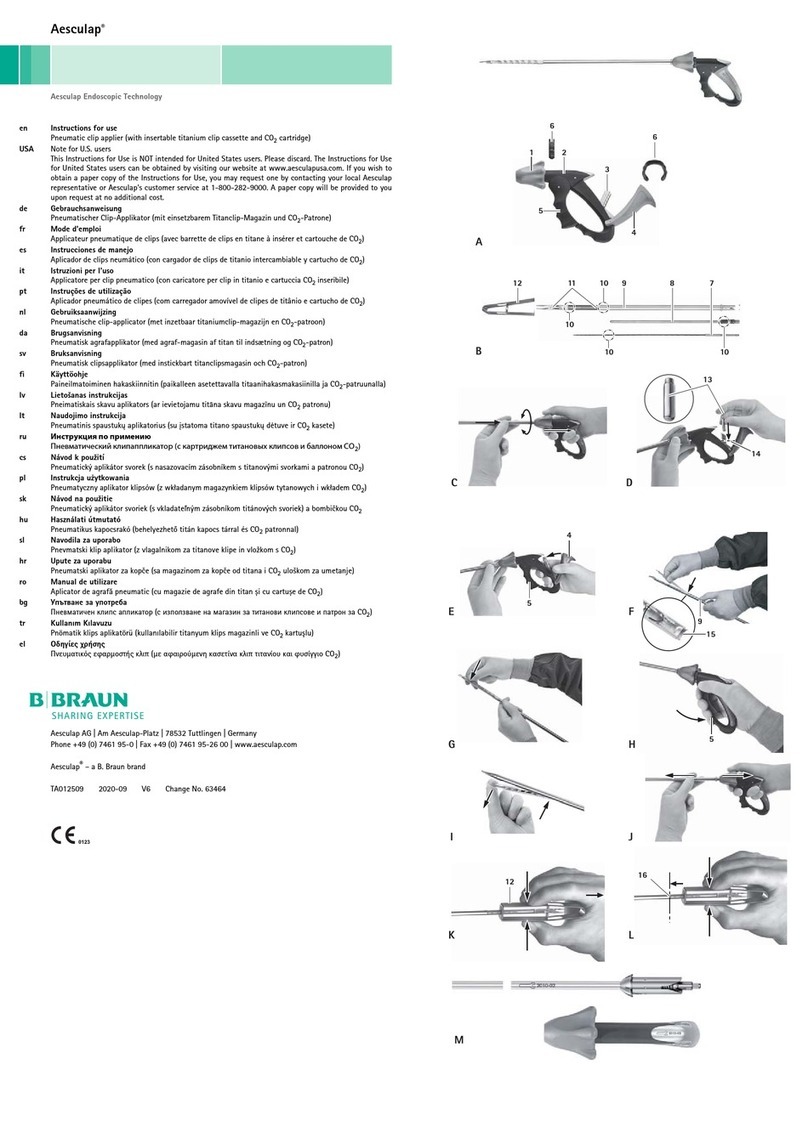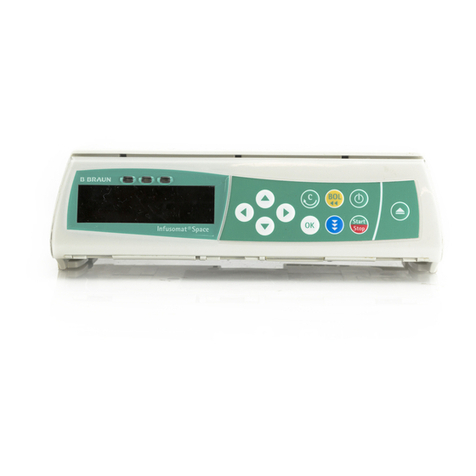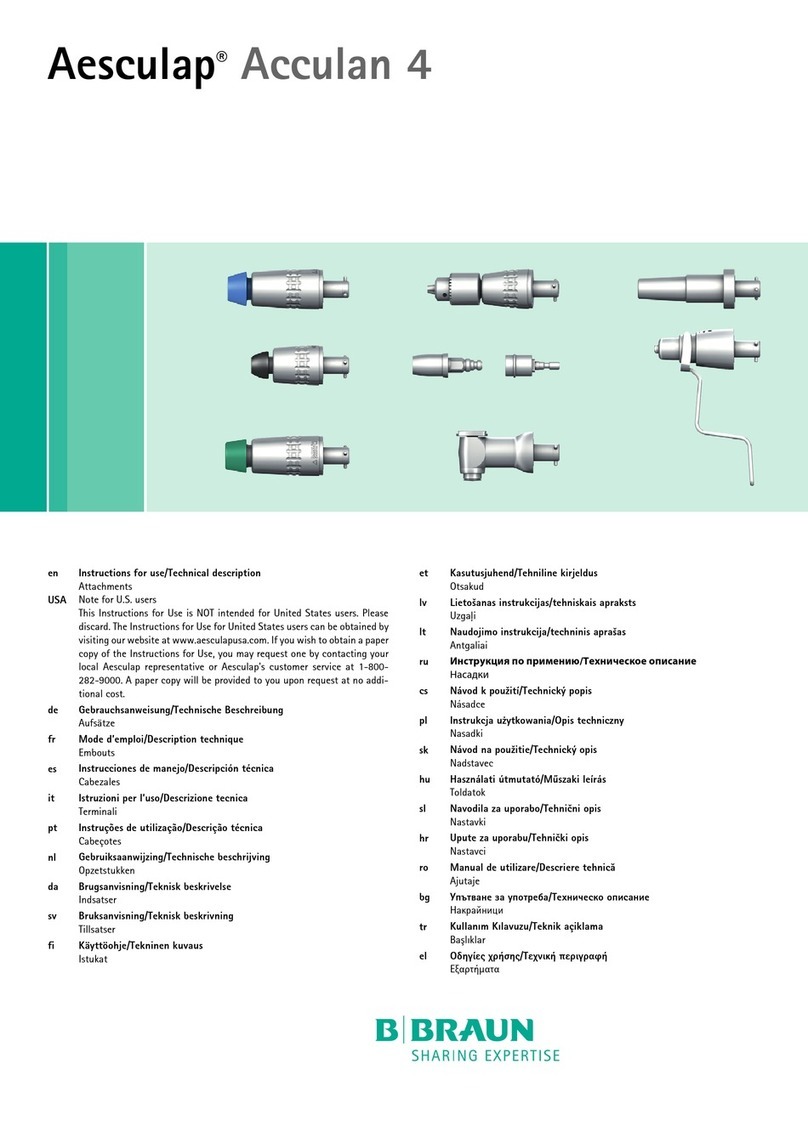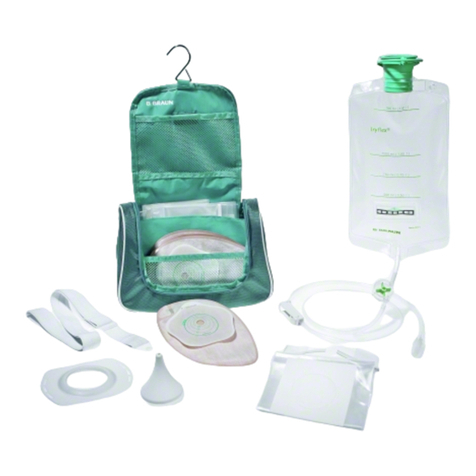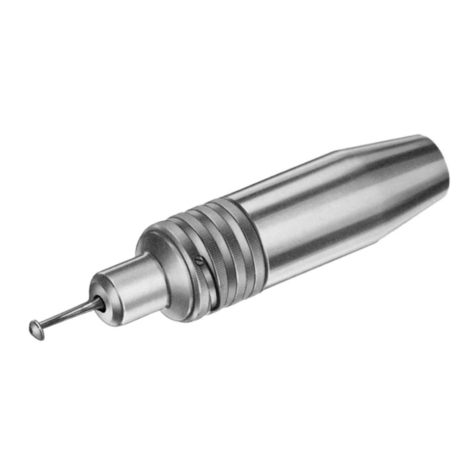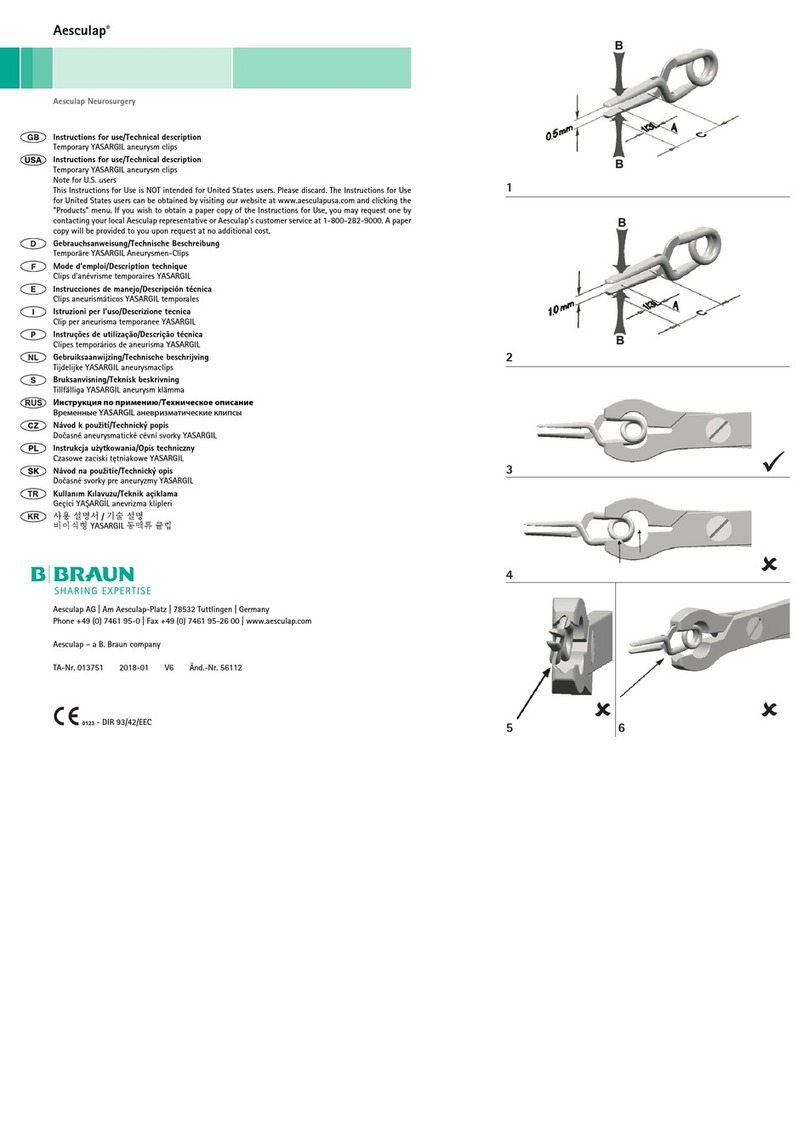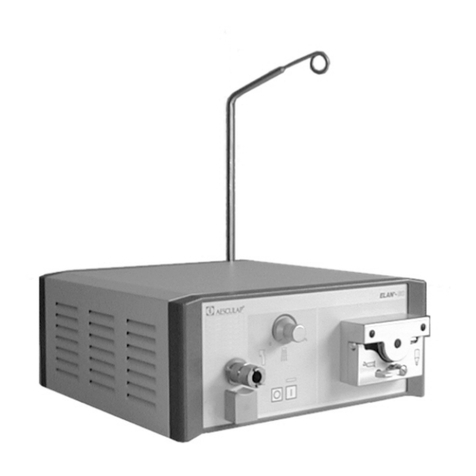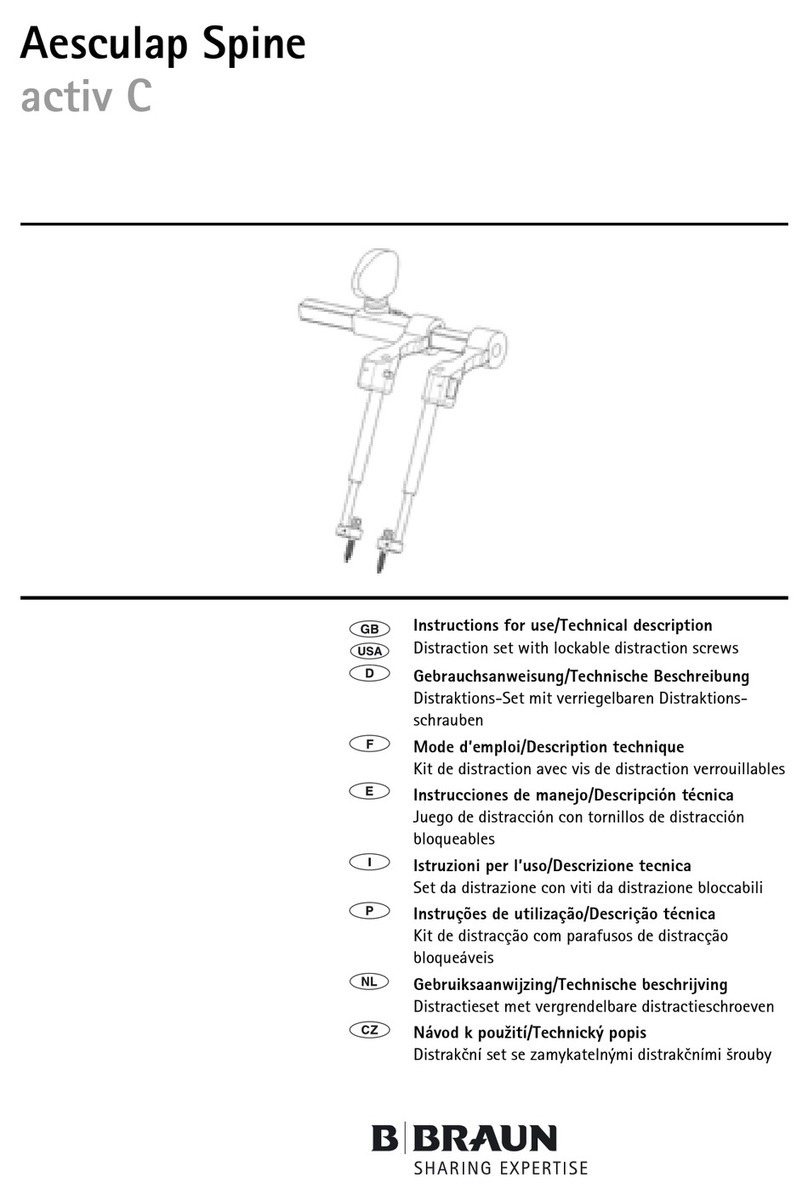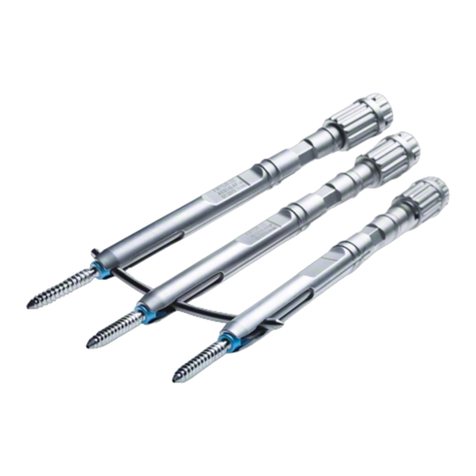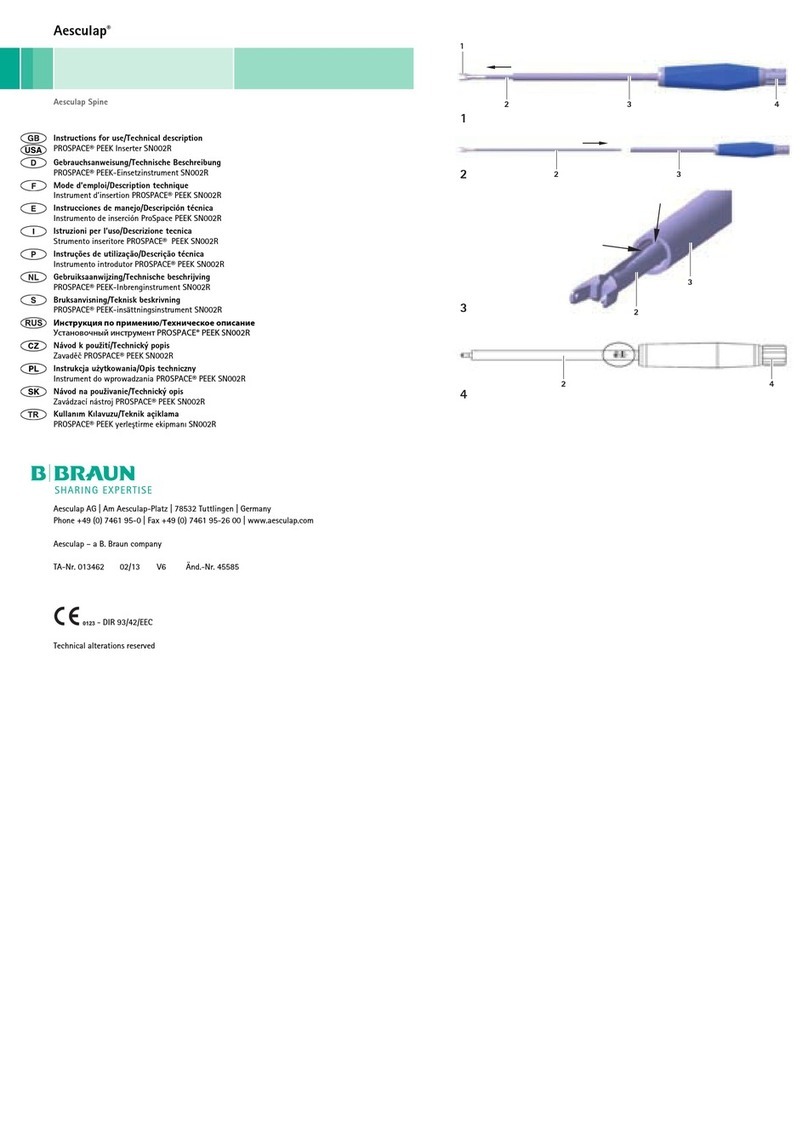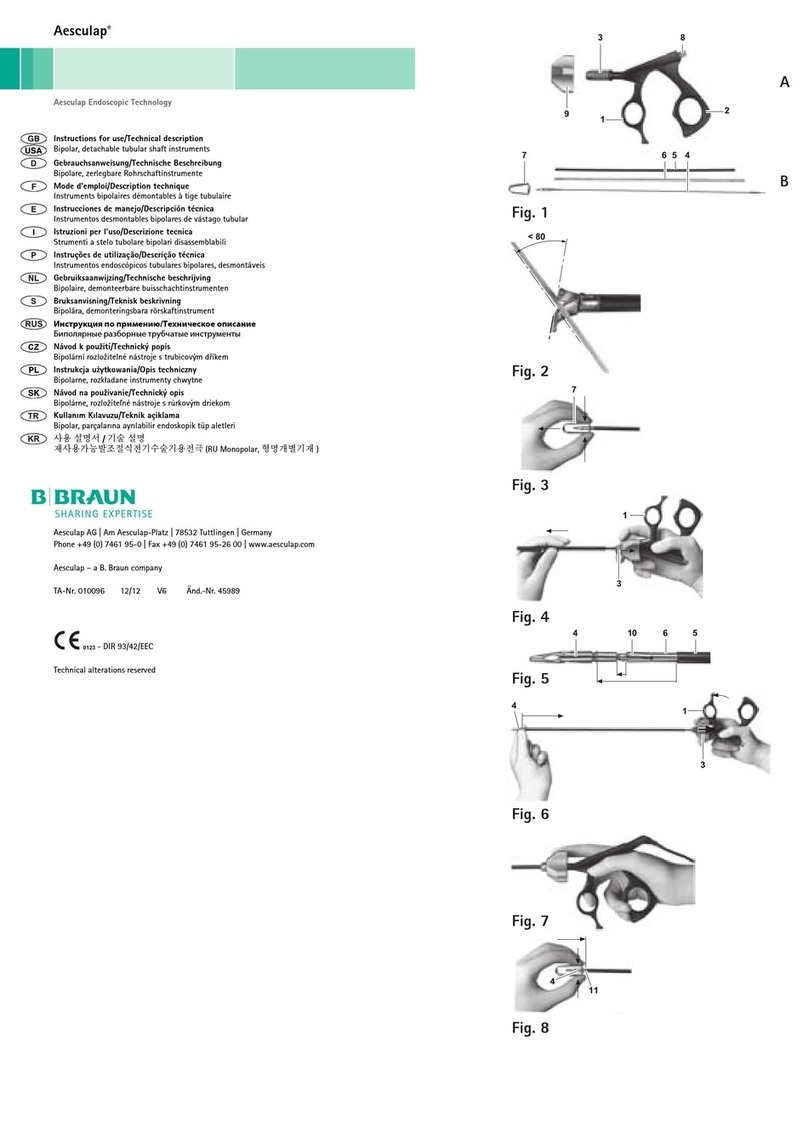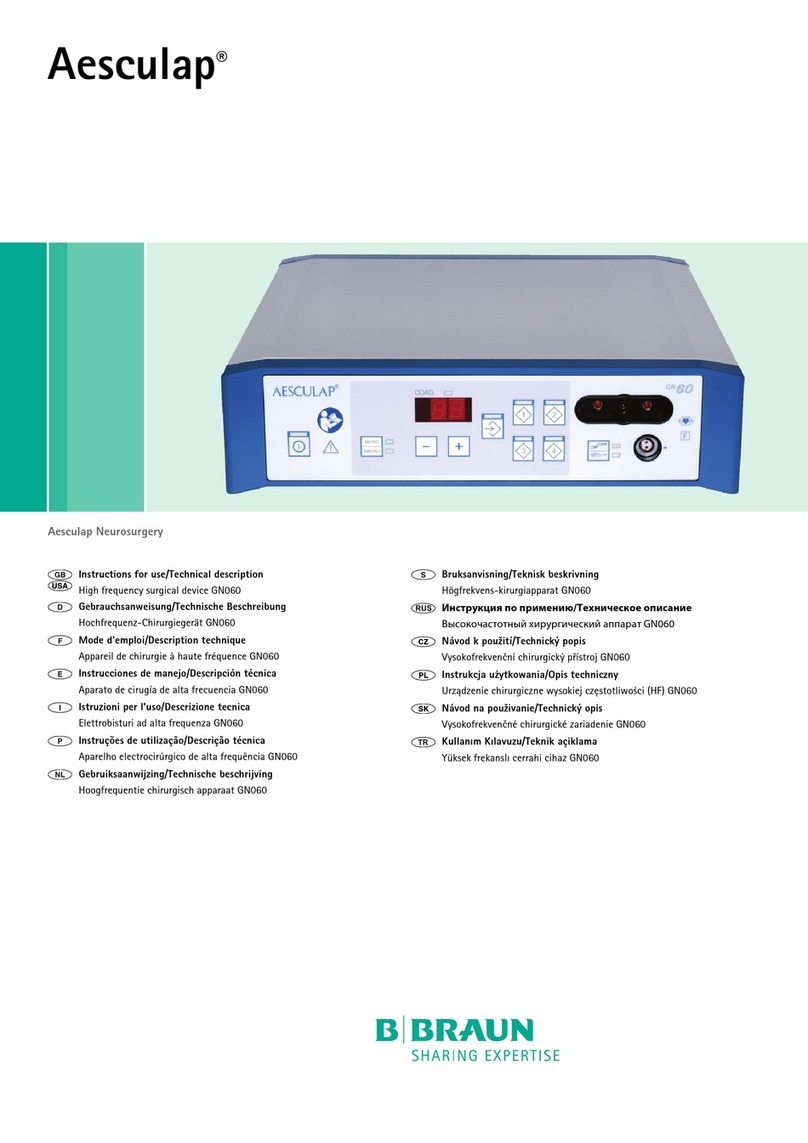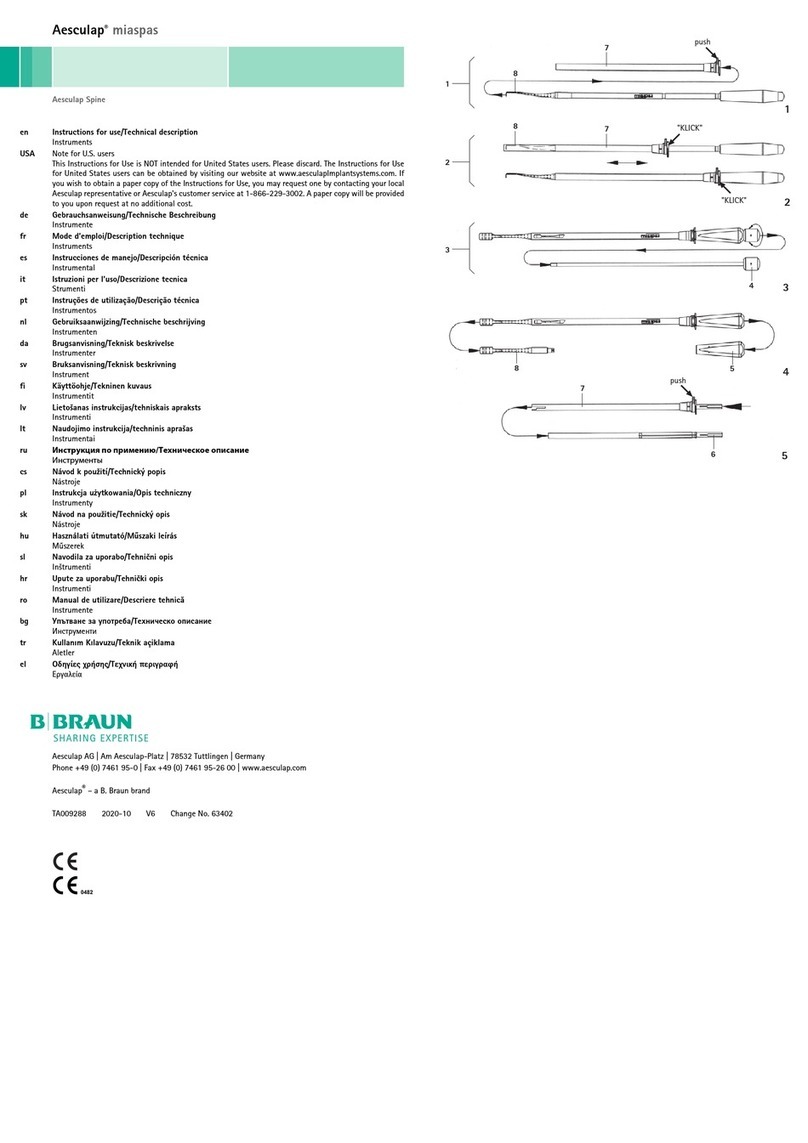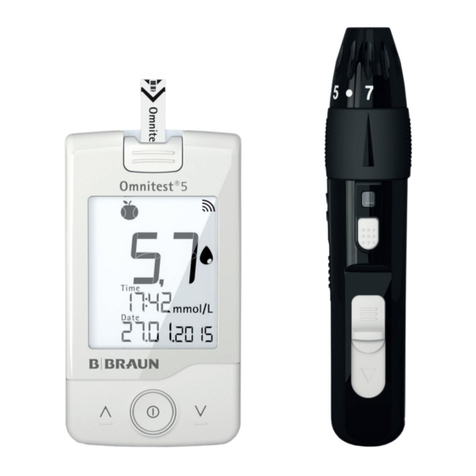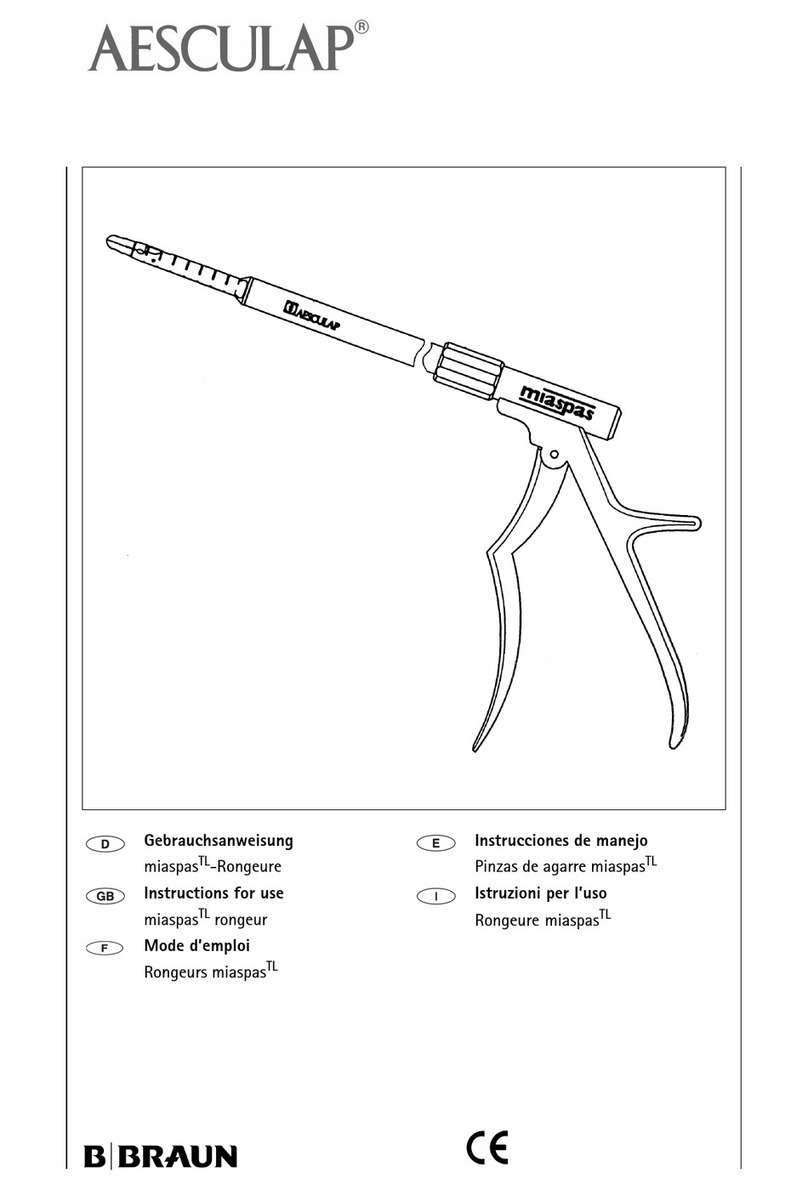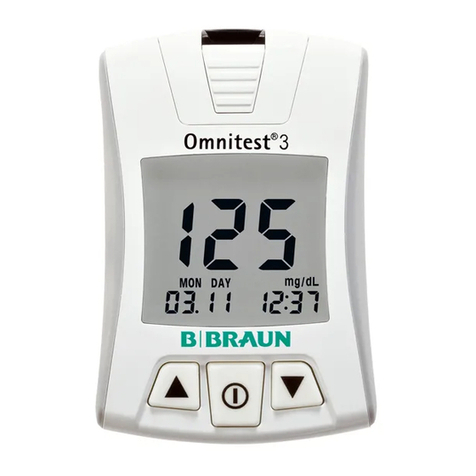
►Undo the lock nut 12 by turning it clockwise.
►Turn the anchoring rods 990° in the anterior direction and remove the endplate.
►If applicable, remove other endplates in the same way.
Disassembly
activ L revision instrument for endplates FW966R/FW967R
►Unscrew handle FW998R of revision instrument FW966R/FW967R.
►Turn the anchoring rods 9so that the hooks 10 are positioned in the direction of the slots 14.
►Slide the anchoring rods 9behind the handpiece until the hooks 10 are positioned on the middle section of the
revision instrument FW966R/FW967R. When doing so, slide the hooks 10 through the slots 14, see Fig. 10.
►Turn the lock nuts 12 counterclockwise until they are fully undone.
►Slide the lock nuts 12 along the anchoring rods behind the handpiece.
activ L revision instrument for PE inlay FW968R
►Turn the adjustment knob 8counterclockwise and gently pull on the jaw part 6until the jaw part comes out, see
Fig. 11.
Assembly
activ L revision instrument for endplates FW966R/FW967R
►Slide the lock nuts 12 along the anchoring rods 9as far as the threaded rods, see Fig. 10.
►Turn the lock nuts 12 clockwise onto the threaded rods.
►Turn the anchoring rods 9so that the hooks 10 are positioned in the direction of the slots 14.
►Slide the hooks 10 through the slots 14.
activ L revision instrument for PE inlay FW968R
►Insert the jaw part 6into the tubular shaft 15 of the revision instrument FW968R until it engages, see Fig. 11.
When doing so, ensure that the “caudal” marking on the tubular shaft is aligned with the edge of the jaw part 6.
►Push the jaw part 6in the direction of the adjustment knob 8and turn the adjustment knob clockwise until the
jaw part is positioned just in front of the tubular shaft. When doing so, ensure that the jaw part is not compressed
by the tubular shaft.
Validated reprocessing procedure
General safety instructions
Note
Adhere to national statutory regulations, national and international standards and directives, and local, clinical
hygiene instructions for sterile processing.
Note
For patients with Creutzfeldt-Jakob disease (CJD), suspected CJD or possible variants of CJD, observe the relevant
national regulations concerning the reprocessing of products.
Note
Mechanical reprocessing should be favored over manual cleaning as it gives better and more reliable results.
Note
Successful processing of this medical device can only be ensured if the processing method is first validated. The oper-
ator/sterile processing technician is responsible for this.
The recommended chemistry was used for validation.
Note
If there is no final sterilization, then a virucidal disinfectant must be used.
Note
For the latest information on reprocessing and material compatibility see also the Aesculap extranet at
www.extranet.bbraun.com
The validated steam sterilization procedure was carried out in the Aesculap sterile container system.
General information
Dried or affixed surgical residues can make cleaning more difficult or ineffective and lead to corrosion. Therefore the
time interval between application and processing should not exceed 6 h; also, neither fixating pre-cleaning temper-
atures >45 °C nor fixating disinfecting agents (active ingredient: aldehydes/alcohols) should be used.
Excessive measures of neutralizing agents or basic cleaners may result in a chemical attack and/or to fading and the
laser marking becoming unreadable visually or by machine for stainless steel.
Residues containing chlorine or chlorides e.g. in surgical residues, medicines, saline solutions and in the service water
used for cleaning, disinfection and sterilization will cause corrosion damage (pitting, stress corrosion) and result in
the destruction of stainless steel products. These must be removed by rinsing thoroughly with demineralized water
and then drying.
Additional drying, if necessary.
Only process chemicals that have been tested and approved (e.g. VAH or FDA approval or CE mark) and which are
compatible with the product’s materials according to the chemical manufacturers’ recommendations may be used
for processing the product. All the chemical manufacturer's application specifications must be strictly observed. Fail-
ure to do so can result in the following problems:
■Optical changes of materials, e.g. fading or discoloration of titanium or aluminum. For aluminum, the applica-
tion/process solution only needs to be of pH >8 to cause visible surface changes.
■Material damage such as corrosion, cracks, fracturing, premature aging or swelling.
►Do not use metal cleaning brushes or other abrasives that would damage the product surfaces and could cause
corrosion.
►Further detailed advice on hygienically safe and material-/value-preserving reprocessing can be found at www.a-
k-i.org, link to Publications, Red Brochure – Proper maintenance of instruments.
Disassembling the product before carrying out the reprocessing procedure
►Open up instruments with hinges.
Preparations at the place of use
►If applicable, rinse non-visible surfaces preferably with deionized water, with a disposable syringe for example.
►Remove any visible surgical residues to the extent possible with a damp, lint-free cloth.
►Transport the dry product in a sealed waste container for cleaning and disinfection within 6 hours.
Preparations before cleaning
FW966R, FW967R, FW968R:
►Disassemble the product prior to cleaning, see Disassembly.
Cleaning/disinfection
Product-specific safety notes on the reprocessing procedure
►Use suitable cleaning/disinfecting agents if the product is put away in a wet condition. To prevent foam forma-
tion and reduced effectiveness of the process chemicals: Prior to mechanical cleaning and disinfection, rinse the
product thoroughly with running water.
►Carry out ultrasound cleaning:
– as an effective mechanical supplement to manual cleaning/disinfection.
– as a pre-cleaning procedure for products with encrusted residues, in preparation for mechanical cleaning/
disinfection.
– as an integrated mechanical support measure for mechanical cleaning/disinfection.
– for additional cleaning of products with residues left after mechanical cleaning/disinfection.
►Clean and disinfect microsurgical products mechanically if they can be placed securely in the machine or on the
positioning aids.
Validated cleaning and disinfection procedure
Manual cleaning/disinfection
►Prior to manual disinfecting, allow water to drip off for a sufficient length of time to prevent dilution of the dis-
infecting solution.
►After manual cleaning/disinfection, check visible surfaces visually for residues.
►Repeat the cleaning /disinfection process if necessary.
Manual cleaning with immersion disinfection
D–W: Drinking water
FD–W: Fully desalinated water (demineralized, low microbiological contamination: drinking water quality
at least)
RT: Room temperature
*Recommended: BBraun Stabimed
CAUTION
Damage to the product due to inappropriate cleaning/disinfecting agents and/or
excessive temperatures!
►Use cleaning and disinfecting agents approved for, e.g., aluminum, plastics,
and high-grade steel, according to the manufacturer’s instructions.
►Observe specifications regarding concentration, temperature and exposure
time.
►Do not exceed the maximum permitted cleaning temperature of 60 °C.
Validated procedure Specific requirements Reference
Manual cleaning with
immersion disinfection
■FW960R
■FW965R
■FW968R
■FW998R
■Cleaning brush: TA011944
■20 ml disposable syringe
■Keep working ends open for cleaning.
■When cleaning instruments with movable hinges,
ensure that these are in an open position and, if appli-
cable, move the hinge while cleaning.
■Drying phase: Use lint-free cloth or medical com-
pressed air
Chapter Manual clean-
ing/disinfection and
subchapter:
■Chapter Manual
cleaning with
immersion disinfec-
tion
Manual cleaning with
ultrasound and immer-
sion disinfection
■FW966R
■FW967R
■Cleaning brush: TA011944
■20 ml disposable syringe
■Keep working ends open for cleaning.
■When cleaning instruments with movable hinges,
ensure that these are in an open position and, if appli-
cable, move the joint while cleaning.
■Drying phase: Use a lint-free cloth or medical com-
pressed air
Chapter Manual clean-
ing/disinfection and
sub-chapter:
■Chapter Manual
cleaning with ultra-
sound and immer-
sion disinfection
Manual pre-cleaning
with brush and subse-
quent mechanical
alkaline cleaning and
thermal disinfection
■FW960R
■FW965R
■FW968R
■FW998R
■Cleaning brush: TA011944
■20 ml disposable syringe
■Place the instrument in a tray that is suitable for clean-
ing (avoiding rinsing blind spots).
■Keep working ends open for cleaning.
■Place instruments in the tray with their hinges open.
Chapter Mechanical
cleaning/disinfection
with manual pre-
cleaning and sub-
chapter:
■Chapter Manual
pre-cleaning with a
brush
■Chapter Mechani-
cal alkaline clean-
ing and thermal
disinfecting
Manual pre-cleaning
with ultrasound and
brush, and subsequent
mechanical alkaline
cleaning and thermal
disinfection
■FW966R
■FW967R
■Cleaning brush: TA011944
■20 ml disposable syringe
■Place the instrument in a tray that is suitable for clean-
ing (avoiding rinsing blind spots).
■Keep working ends open for cleaning.
■Place instruments in the tray with their hinges open.
Chapter Mechanical
cleaning/disinfection
with manual pre-
cleaning and subchap-
ter:
■Chapter Manual
pre-cleaning with
ultrasound and
brush
■Chapter Mechani-
cal alkaline clean-
ing and thermal
disinfecting
Phase Step T
[°C/°F]
t
[min]
Conc.
[%] Water
quality Chemical
I Disinfecting
cleaning RT (cold) >15 2 D–W Aldehyde-free, phenol-free,
and QUAT-free concentrate,
pH ~ 9*
II Intermediate
rinse RT (cold) 1 - D–W -
III Disinfection RT (cold) 15 2 D–W Aldehyde-free, phenol-free,
and QUAT-free concentrate,
pH ~ 9*
IV Final rinse RT (cold) 1 - FD-W -
V Drying RT - - - -
